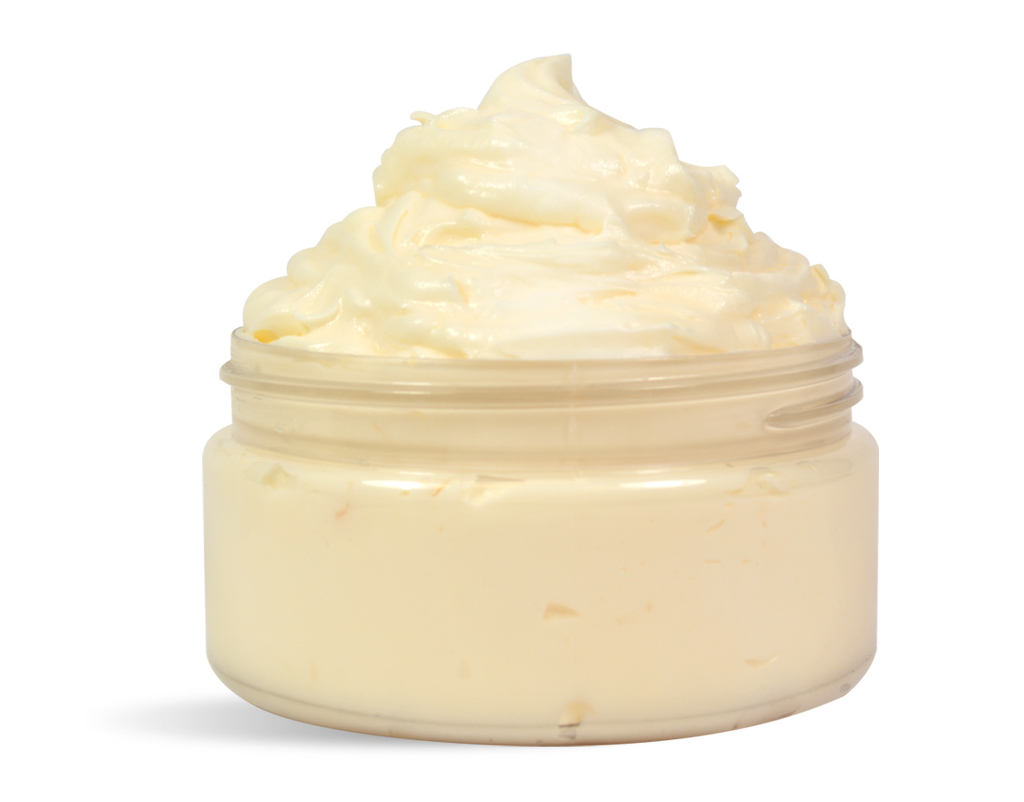Body Butter BasicsUpdated a year ago
Body Butters are oil-based lotions that do not have any water content, thus not requiring a preservative.

Body Butter is a great product to make for anyone that is looking for intense moisture. The beauty of body butter is that once you have a simple formula/recipe, it’s easy to customize to your liking. From a do-it-yourself standpoint, homemade body butter will last for months without the use of a preservative since water is not an ingredient. Body butters can be whipped or made into a thick paste. Stored away from moisture and light, this homemade body butter should last a minimum of 6 months or longer. It is recommended to use a spoon or spatula to scoop out product rather than your fingers- this will extend the life of the body butter.
HOW’S IT MADE?
Body Butter has a few main ingredients. It's super simple to make and the butter can be customized based on your individual preference. Best part is that it only takes a few ingredients to create a great body butter recipe!
Main Ingredient: BUTTERS
Homemade body butter starts with butter such as Shea Butter, Cocoa Butter, Mango Butter and even various Butter Blends etc... Let’s take a look at some of the butters that are most commonly used:
Shea Butter: Shea butter comes from the “nut” (or pit) of the fruit found on the Karite Tree. It has a somewhat strong scent when it’s purchased in an unrefined state. Since Shea Butter is naturally soft, it can be used as the main ingredient in body butter, or it may be combined with another butter–cocoa or mango butter–to create a custom body butter.
Cocoa Butter: Cocoa butter comes from the cocoa bean, so it smells like chocolate. Cocoa Butter is hard at room temperature, and it melts easily. It's recommended not to make a 100% cocoa butter body butter because you’ll end up with a final product that’s solid as a rock. Cocoa butter must be mixed with a softer butter, like Shea or Mango Butter, to yield a soft and spreadable final product.
Mango Butter: Mango Butter comes from the seed of mango fruit. It’s a soft butter, similar to Shea Butter in that it can have a bit of a gritty texture before it’s melted down. If you don’t want to use Shea Butter to make body butter, then Mango Butter is the best replacement. Mango Butter may be combined with Shea or Cocoa Butter to create a custom formulation.
Secondary Ingredient: OILS
Oil is the second main ingredient used to make body butter. Carrier oils such as Almond, Jojoba, Grapeseed, Coconut Oil, etc. can be used. Let’s take a look at some of the most commonly used oils:
Coconut Oil: This is a great oil for general moisturizing and serves as a protective layer, helping to retain the moisture in your skin. It also acts as a mild oil suitable for those with inflamed and irritated skin, and those with skin sensitivities.
Sweet Almond Oil: Sweet almond oil contains fatty acids as well as vitamins A
and E and penetrates easily into the skin.
Sunflower Oil: An oil wealthy in oleic acids with high amounts of vitamins A, D, and E, it also has beneficial amounts of lecithin and unsaturated fatty acids. It is deeply nourishing and conditioning for the skin, and is highly recommended for recipes designed to treat dry, weathered, aged, and damaged skin.
Jojoba Oil: Jojoba oil comes from the beans of a shrub like plant, and it is actually a liquid plant wax rather than an oil. It can be clear or bright golden in color, has a mild odor, and is favored in the carrier oil family because of its advanced molecular stability. It makes a wonderful skin moisturizer because of its absorption properties that are similar to our skin's own sebum.
Additional Ingredients
Antioxidants: Adding an antioxidant such as Rosemary Oleoresin Extract (ROE), Grapefruit Extract or Vitamin E to prevent oils and butters from going rancid. This will help extend the life of your final product.
Wax: Beeswax or a Non-Animal Wax alternative can be added to body butter to help maintain its consistency. This is extremely helpful if using/selling product in warmer temperatures. This ingredient can be eliminated altogether if you prefer not to use a wax. You just need to insure that you have a good ratio or hard & soft butters and cut back on the amount of oil used.
Scent: A Fragrance Oil, Hydrosol or Essential Oil may be added for scent and additional skincare benefits.
Note: If adding a Hydrosol, a preservative will need to be used as hydrosols are water based.
Optional ingredients- Body butter is definitely more emollient and has a heavier texture than lotion does, but after a few minutes it will penetrate the skin and lose any greasy feel. Some folks find that body butter is a bit too greasy to apply all over the body. The good news is that there’s a simple solution for this issue… add a small amount of arrowroot, tapioca starch, or slick fix to the liquid oil before pouring the oil into the melted butter(s).